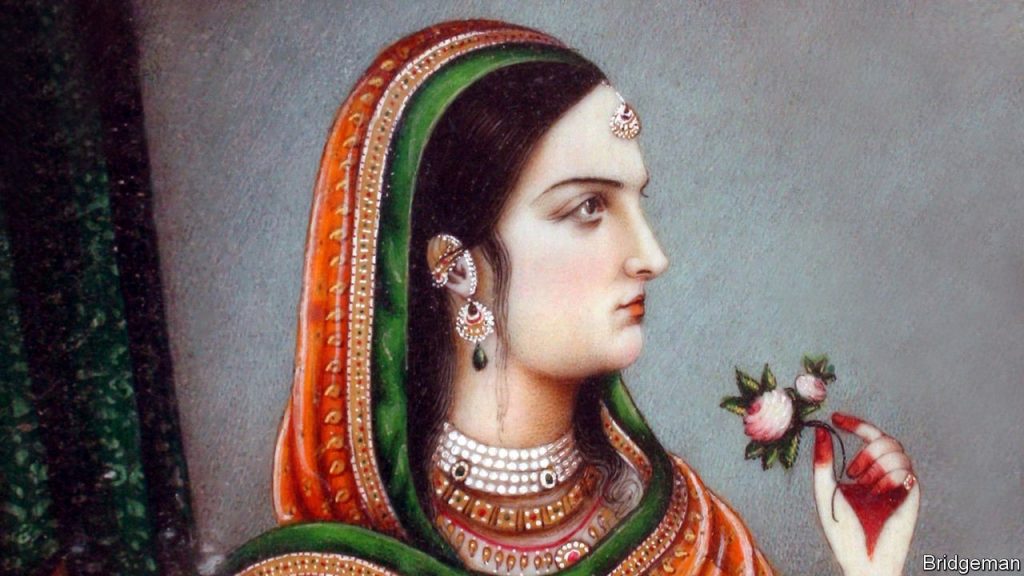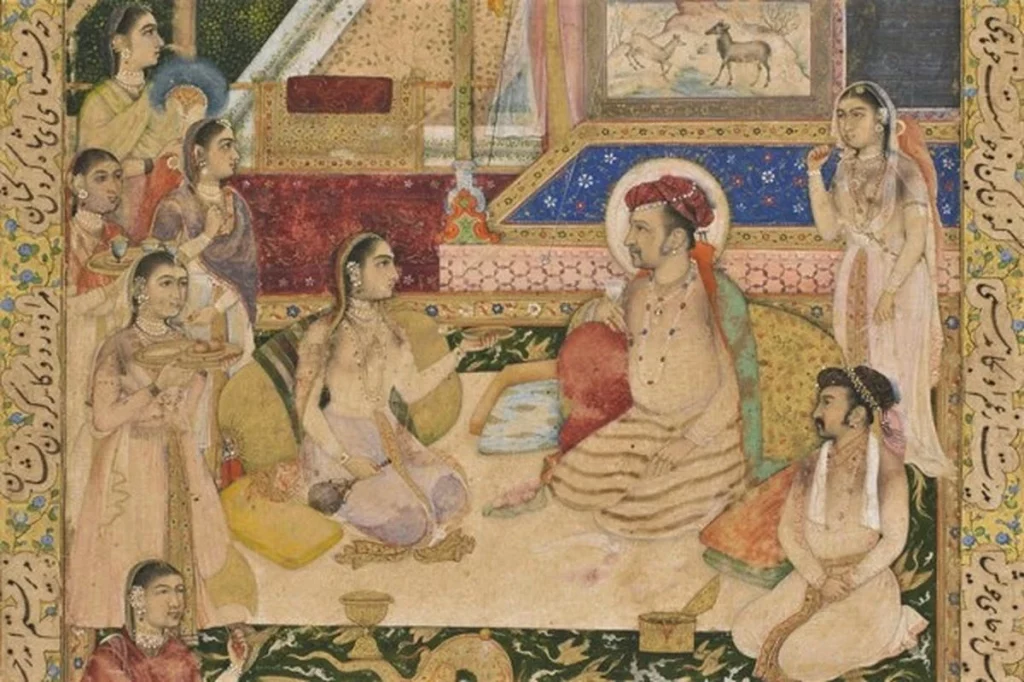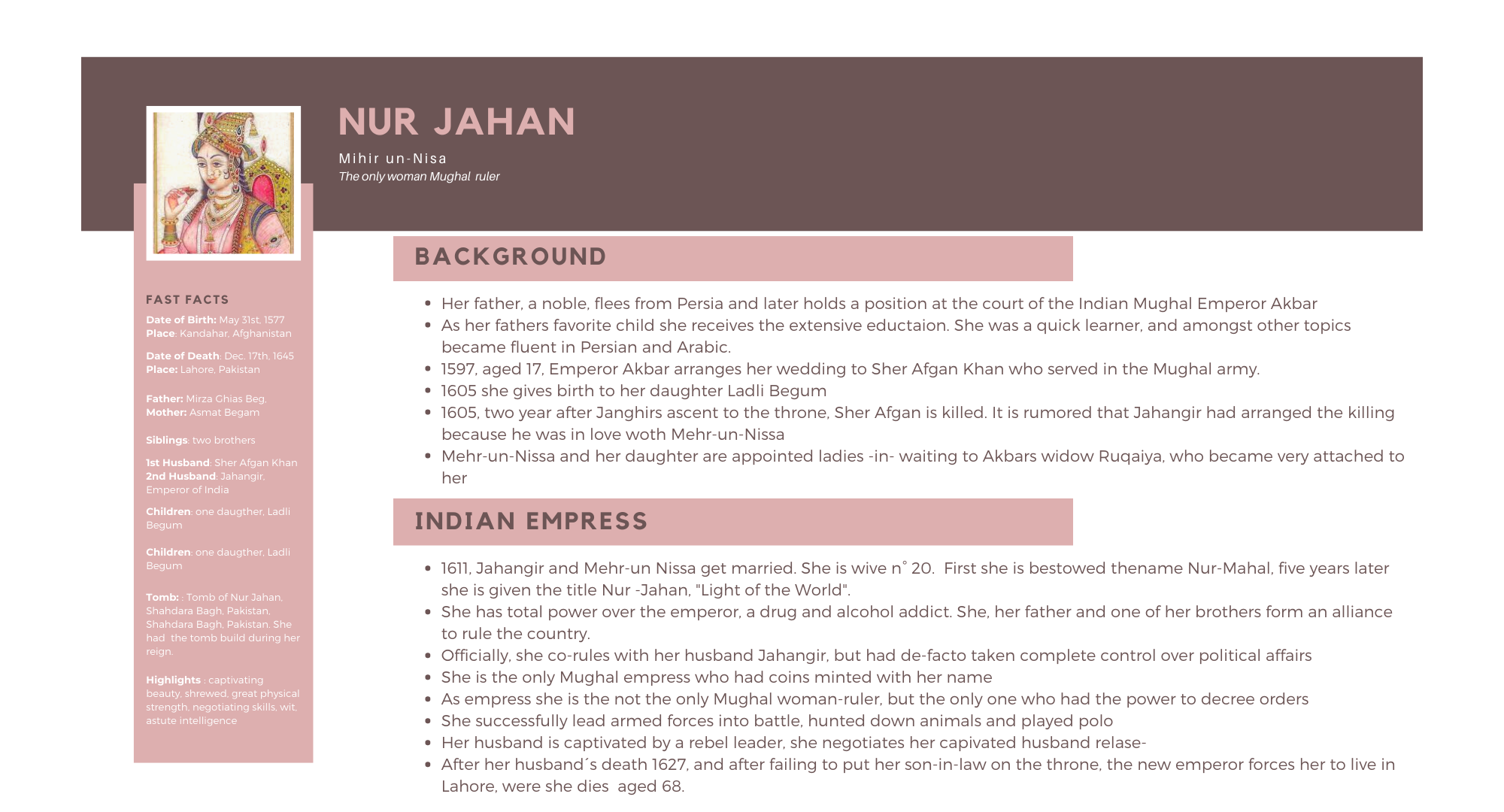
“Hunting is the sort of thing rulers did”
Ruby Lal, Author

The Mughals ruled much of the Indian subcontinent for more than 300 years after they came to power early in the 16th century. It was one of India’s biggest and most powerful dynasties. Many of its emperors and royal women, including Empress Nur Jahan, were patrons of art, music and architecture – they built grand cities and majestic forts, mosques and tombs.
Portrait of Nur-Jahan
Empress of India
– born 1577, to Persian Nobility in Kandahar
– she receives extensive education
– 1597 she is married to Sher Afgan Khan
– 1605 her husband is killed and she and her daughter move to the imperial court
– 1611 she becomes the 20th wife of Emperor Jahangir
– she is given the name Nur-Jahan- Light of the World
– due to her husbands drug and alcohol addiction she becomes India’s defacto ruler
– she had power at a time when women were kept under veil
– known for her intelligence, strength, negotiating power and courage
– she has coins minted with her name on
– she died 1627 living in exile, in Lahore

For more
Books to read
- The Astonishing Reign of Nur-Jahan, by Ruby Lal, Penguin India 2018
- The Twentieth Wife, by Indu Sundaresan, Washington Post Press 2003
Film
- Poor Jehan a 1967 Bollywood Film, Directed by Mohammed Saiq, with Meena Kumary as Nur-Jahan
You should know this
Exiled in Lahore, she oversaw the completion of Itmad-ud-daulah. A mausoleum, built to honour her husband and later herself. The mausoleum would later prove to be the inspiration for the Taj Mahal in Agra. While the Taj Mahal is seen as an eternal symbol of love, made by Shah Jahan for his wife Mumtaz Mahal, their love story was, according to historians, tailored by none other than Nur Jahan herself. Mumtaz was Nur Jahan’s niece and was married to Shah Jahan when she was 19.
